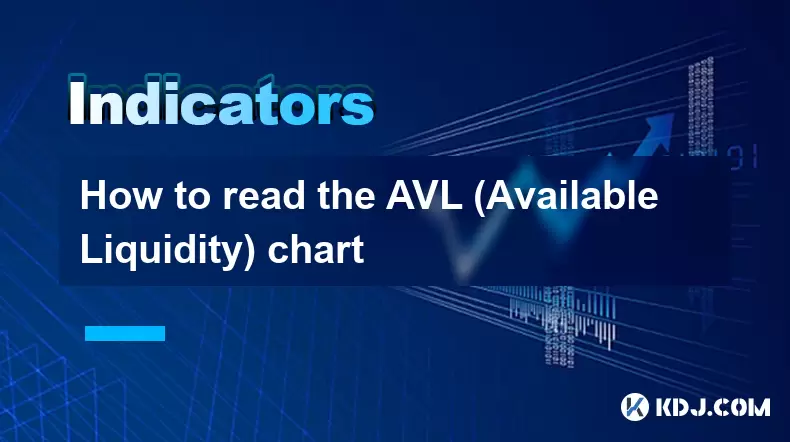-
 Bitcoin
Bitcoin $117,623.6666
0.22% -
 Ethereum
Ethereum $3,118.3376
5.20% -
 XRP
XRP $2.9135
1.52% -
 Tether USDt
Tether USDt $1.0001
0.01% -
 BNB
BNB $686.9764
0.85% -
 Solana
Solana $162.6889
1.69% -
 USDC
USDC $0.9999
0.00% -
 Dogecoin
Dogecoin $0.1969
2.83% -
 TRON
TRON $0.3010
0.33% -
 Cardano
Cardano $0.7390
1.96% -
 Hyperliquid
Hyperliquid $47.4375
-1.09% -
 Stellar
Stellar $0.4579
2.57% -
 Sui
Sui $4.0002
1.65% -
 Chainlink
Chainlink $15.9383
3.70% -
 Hedera
Hedera $0.2348
1.25% -
 Bitcoin Cash
Bitcoin Cash $497.4031
0.86% -
 Avalanche
Avalanche $21.8528
5.41% -
 UNUS SED LEO
UNUS SED LEO $8.8249
-2.01% -
 Shiba Inu
Shiba Inu $0.0...01362
5.22% -
 Toncoin
Toncoin $3.0789
3.06% -
 Litecoin
Litecoin $95.7463
3.56% -
 Polkadot
Polkadot $4.0469
4.72% -
 Monero
Monero $334.4798
-0.76% -
 Uniswap
Uniswap $9.1691
3.68% -
 Dai
Dai $1.0002
0.03% -
 Ethena USDe
Ethena USDe $1.0005
0.00% -
 Bitget Token
Bitget Token $4.5441
4.51% -
 Pepe
Pepe $0.0...01257
5.29% -
 Aave
Aave $325.4694
4.71% -
 Bittensor
Bittensor $434.8969
4.99%
How to read the AVL (Available Liquidity) chart
The AVL chart in cryptocurrency trading shows liquidity depth at various price levels, helping traders assess order placement and anticipate market movements.
Jul 11, 2025 at 04:49 pm

Understanding the Basics of AVL in Cryptocurrency Trading
The AVL (Available Liquidity) chart is a critical tool for traders navigating the volatile cryptocurrency markets. It reflects the total amount of liquidity available at different price levels within an order book. This data helps traders assess how easily they can enter or exit positions without significantly affecting the market price. Unlike traditional volume charts, the AVL chart provides a visual representation of both buy and sell orders across various price points.
To interpret this chart effectively, it's essential to understand what constitutes "liquidity." In essence, liquidity refers to the ability to convert an asset into cash quickly without causing significant price fluctuations. A high level of liquidity indicates that there are numerous buyers and sellers actively participating in the market, which typically results in tighter spreads between bid and ask prices.
Key Components of the AVL Chart
The AVL chart consists of two primary components: the bid side and the ask side. The bid side represents all open buy orders at specific price levels, while the ask side shows open sell orders. These sides are often displayed on opposite sides of the chart, with price levels along one axis and cumulative volumes along another.
Each bar or line segment corresponds to a particular price point where orders have been placed. For instance, if you observe a large bar on the bid side near $50,000 for Bitcoin, it signifies substantial buying interest around that price level. Conversely, a similar-sized bar on the ask side would indicate significant selling pressure at that same price.
Understanding these dynamics allows traders to gauge potential support and resistance levels based on where most trading activity occurs. Traders can also identify areas with low liquidity, which might lead to increased volatility when those regions are tested by incoming orders.
Reading Price Levels and Volume Accumulation
When analyzing the AVL chart, focus on identifying clusters of orders at certain price levels. These clusters often act as psychological barriers or zones of interest for traders. High concentrations of buy orders may suggest strong support levels because many participants believe the asset is undervalued below that threshold. Similarly, dense pockets of sell orders could represent resistance levels where profit-taking or short-selling activities increase.
Volume accumulation plays a crucial role here; higher volumes generally imply stronger support or resistance. However, interpreting these signals requires context from other technical indicators like moving averages or RSI (Relative Strength Index). Combining multiple tools enhances your analytical capabilities beyond what any single metric offers alone.
It’s also important to note that sudden spikes in volume at particular price points might signal impending breakouts or breakdowns depending on whether they occur above resistance or below support lines. Monitoring such developments enables proactive decision-making rather than reactive responses after major moves unfold.
Utilizing AVL Data for Order Placement Strategies
Traders leverage AVL data not only for analysis but also strategically placing their own trades. By examining existing order depths provided through AVL charts, informed decisions about limit vs. market orders become clearer. If you notice considerable depth on either side—say heavy bids just beneath current market price—it might be prudent to place your buy order slightly lower than prevailing rates since execution likelihood increases substantially due to existing demand.
Conversely, setting stop-loss orders becomes more nuanced using AVL insights. Placing stops too close to known liquidity pools risks triggering prematurely during minor retracements before trends resume directionally. Instead, aligning them closer to less liquid regions reduces false triggers while still protecting capital efficiently.
Moreover, scalpers frequently utilize real-time updates from dynamic AVL displays to capitalize on fleeting arbitrage opportunities across exchanges. Recognizing discrepancies early enough permits swift action exploiting pricing inefficiencies before automated systems correct imbalances naturally over time.
Interpreting Market Sentiment Through AVL Patterns
Beyond immediate tactical advantages offered by AVL readings, long-term patterns reveal broader market sentiment shifts towards assets under scrutiny. Gradual buildups in ascending order volumes hint bullish inclinations whereas persistent declines despite favorable news cycles betray underlying bearish undertones resisting upward momentum attempts.
Observing changes in AVL profiles post-major announcements—like regulatory approvals or partnership unveilings—provides actionable intelligence regarding community reception vis-à-vis project fundamentals versus hype-driven speculation phases. Sudden collapses following positive headlines usually denote profit booking waves eroding recent gains rapidly unless fresh inflows rejuvenate depleted reserves swiftly thereafter.
Additionally, comparing historical AVL snapshots against present conditions aids in spotting cyclical behaviors recurring periodically amidst evolving macroeconomic landscapes influencing digital asset valuations globally. Such comparative analyses empower investors crafting diversified portfolios resilient against sector-specific downturns yet poised capturing upside bursts emerging unpredictably amid uncertainty.
Frequently Asked Questions About AVL Charts
What does a spike in available liquidity indicate?
A spike in available liquidity suggests heightened trader interest at specific price levels. This could mean either strong support/resistance formation or imminent breakout potential once sufficient buying/selling pressure accumulates overcoming localized congestion spots temporarily stalling directional progress.
Can I rely solely on AVL charts for making trade decisions?
While valuable, relying exclusively on AVL charts isn't advisable. Integrating additional metrics like volume profiles, candlestick patterns, and fundamental assessments ensures comprehensive understanding mitigating blind spots inherent focusing narrowly confined datasets potentially misleading absent corroborative evidence elsewhere supporting conclusions drawn independently.
How do I differentiate between genuine liquidity and spoofing on AVL charts?
Spoofing involves placing fake orders intending manipulate perceptions falsely inflate apparent liquidity misleading others entering markets unwisely. Genuine liquidity persists consistently overtime even amidst fluctuating market conditions whereas artificial spikes disappear abruptly lacking staying power sustaining prolonged presence necessary legitimate participation indicators trustworthy decision frameworks.
Is there software specifically designed for tracking AVL metrics?
Several platforms cater specialized needs monitoring advanced order flow analytics including detailed AVL visualization capabilities. Tools like Glassnode Studio, CryptoQuant, and proprietary exchange dashboards offer varying degrees sophistication tailored professional-grade research requirements alongside retail accessibility options meeting diverse user preferences accordingly.
Disclaimer:info@kdj.com
The information provided is not trading advice. kdj.com does not assume any responsibility for any investments made based on the information provided in this article. Cryptocurrencies are highly volatile and it is highly recommended that you invest with caution after thorough research!
If you believe that the content used on this website infringes your copyright, please contact us immediately (info@kdj.com) and we will delete it promptly.
- Bitcoin's Bullish Run: Demand Surges, Correction Unlikely?
- 2025-07-16 12:30:12
- MetYa, Conflux Network, and SocialFi: Building the Future of Web3
- 2025-07-16 12:30:12
- Cantor Fitzgerald, Bitcoin, and SPAC Acquisitions: A New York Perspective
- 2025-07-16 10:30:12
- PoL v2 and BeraChain: Building a Stronger Blockchain Ecosystem
- 2025-07-16 10:30:12
- Bitcoin, Social Media, and FOMO: A New Yorker's Take on the Crypto Craze
- 2025-07-16 10:50:12
- GameStop, Bitcoin, and the Inflation Hedge: A New York Perspective
- 2025-07-16 08:30:12
Related knowledge

Advanced RSI strategies for crypto
Jul 13,2025 at 11:01am
Understanding the Basics of RSI in Cryptocurrency TradingThe Relative Strength Index (RSI) is a momentum oscillator used to measure the speed and chan...

Crypto RSI for day trading
Jul 12,2025 at 11:14am
Understanding RSI in the Context of Cryptocurrency TradingThe Relative Strength Index (RSI) is a momentum oscillator used to measure the speed and cha...

Crypto RSI for scalping
Jul 12,2025 at 11:00pm
Understanding RSI in the Context of Crypto TradingThe Relative Strength Index (RSI) is a momentum oscillator widely used by traders to measure the spe...

What does an RSI of 30 mean in crypto
Jul 15,2025 at 07:07pm
Understanding RSI in Cryptocurrency TradingRelative Strength Index (RSI) is a momentum oscillator widely used in cryptocurrency trading to measure the...

What does an RSI of 70 mean in crypto
Jul 13,2025 at 06:07pm
Understanding the RSI Indicator in Cryptocurrency TradingThe Relative Strength Index (RSI) is a widely used technical analysis tool that helps traders...

How to avoid RSI false signals in crypto
Jul 13,2025 at 06:21pm
Understanding RSI and Its Role in Crypto TradingThe Relative Strength Index (RSI) is a momentum oscillator used to measure the speed and change of pri...

Advanced RSI strategies for crypto
Jul 13,2025 at 11:01am
Understanding the Basics of RSI in Cryptocurrency TradingThe Relative Strength Index (RSI) is a momentum oscillator used to measure the speed and chan...

Crypto RSI for day trading
Jul 12,2025 at 11:14am
Understanding RSI in the Context of Cryptocurrency TradingThe Relative Strength Index (RSI) is a momentum oscillator used to measure the speed and cha...

Crypto RSI for scalping
Jul 12,2025 at 11:00pm
Understanding RSI in the Context of Crypto TradingThe Relative Strength Index (RSI) is a momentum oscillator widely used by traders to measure the spe...

What does an RSI of 30 mean in crypto
Jul 15,2025 at 07:07pm
Understanding RSI in Cryptocurrency TradingRelative Strength Index (RSI) is a momentum oscillator widely used in cryptocurrency trading to measure the...

What does an RSI of 70 mean in crypto
Jul 13,2025 at 06:07pm
Understanding the RSI Indicator in Cryptocurrency TradingThe Relative Strength Index (RSI) is a widely used technical analysis tool that helps traders...

How to avoid RSI false signals in crypto
Jul 13,2025 at 06:21pm
Understanding RSI and Its Role in Crypto TradingThe Relative Strength Index (RSI) is a momentum oscillator used to measure the speed and change of pri...
See all articles

























































































